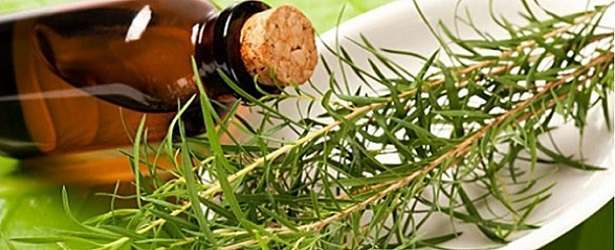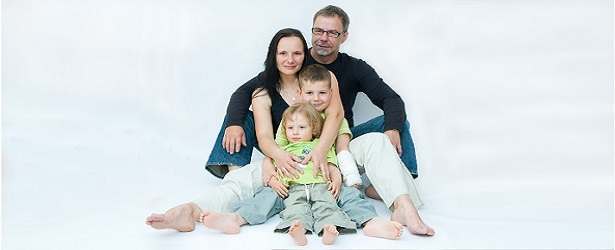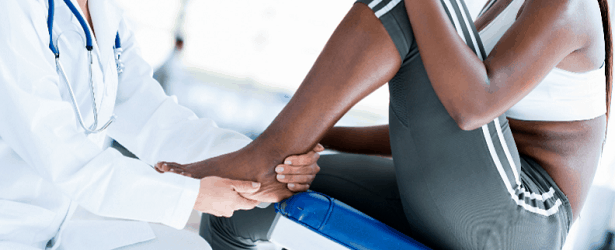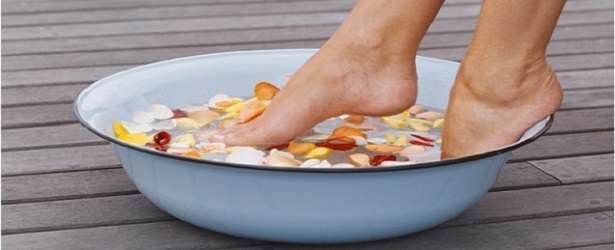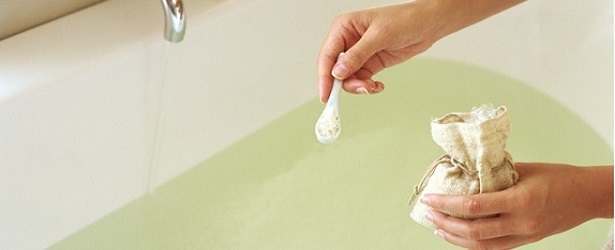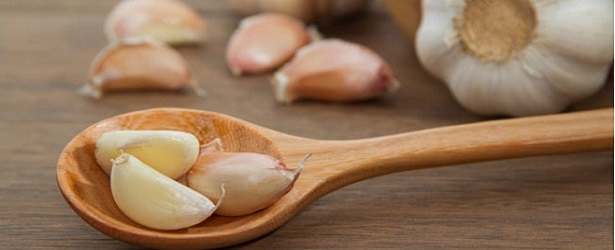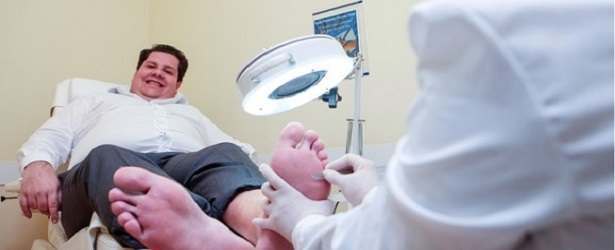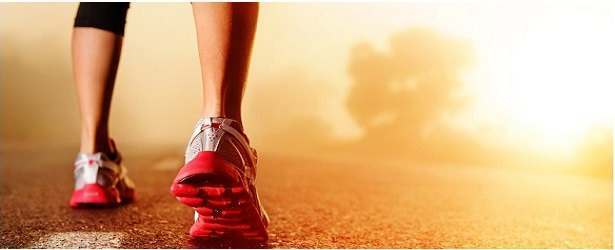Author: webby
Treat Foot Fungus with Tea Tree Oil
Treat Foot Fungus with Tea Tree Oil
Many people use tea tree oil to cure common ailments. It has been recommended by generations of people in Australia over several hundred years. The oil is made from a type of plant called tea tree that is native to the lands of Australia and New Zealand. It is well known for having both antibacterial and anti-fungal properties which makes it ideal for treating common foot ailments like foot fungus and infections. Many researchers have performed studies on tea tree oil but this home remedy works quite slowly. This affects the results of these trials because many patients drop out before the test is complete, because it may often go on for weeks or even months at a time. As such, most of the data that scientists receive from clinical trials is worthless because the test was not complete when the patient dropped out.
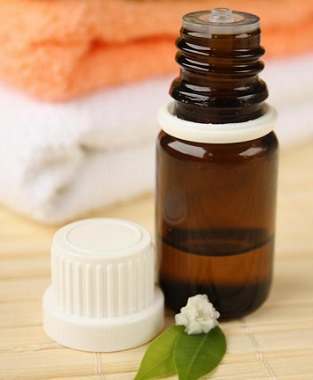 Some studies have shown that there has been considerable success in treating fungal infections on the feet. Fungal infections that respond positively to tea tree oil include toenail fungus and athlete’s foot. By applying tea tree oil at least twice a day, you may be able to see improvements in the spread and side effects of fungal infections. It can clear up serious infections in around six months, but many people experience improvements well before the six-month mark. While tea tree oil is not the best smelling oil, many people do achieve the desired results by using this oil.
Some studies have shown that there has been considerable success in treating fungal infections on the feet. Fungal infections that respond positively to tea tree oil include toenail fungus and athlete’s foot. By applying tea tree oil at least twice a day, you may be able to see improvements in the spread and side effects of fungal infections. It can clear up serious infections in around six months, but many people experience improvements well before the six-month mark. While tea tree oil is not the best smelling oil, many people do achieve the desired results by using this oil.
When you are using tea tree oil, it is best to follow some best practice tips. These tips include the following:
- Make sure you clean your feet very thoroughly before you apply tea tree oil. You should always clean your feet carefully, to prevent the spread and growth of the fungus. This is because fungal infections thrive in areas that are dark, warm and moist and keeping your feet clean and dry destroys their comfortable environment. If you have toenail fungus, try to keep the nail area clean and keep your nails in good condition, avoiding nail polish.
Keep your nails long to cover your skin so you do not cut the infected area. Make sure you switch out your nail file regularly because these will harbor germs when you are trying clear up a fungal infection.
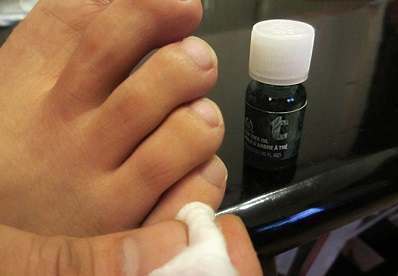 Make sure that you apply the tea tree oil at least twice a day. You have to be consistent with the treatment if you want it to work properly. This is why you must apply it at least twice a day every day. You will see results quickly, but for the tea tree oil to have its full effect, you must use it regularly for at least six months. Otherwise, you are taking the risk of the infection returning. Before you use tea tree oil, make sure that you are not allergic to it by testing some of it on your skin. Should you find that it irritates your skin, consider diluting it with some water or another oil. If you are not bothered by the oil, then you can apply it all over the infected area. If you are applying the tea tree oil to the nails, make sure you cover the whole nail. After you apply the oil, let everything dry and avoid putting on shoes for a while.
Make sure that you apply the tea tree oil at least twice a day. You have to be consistent with the treatment if you want it to work properly. This is why you must apply it at least twice a day every day. You will see results quickly, but for the tea tree oil to have its full effect, you must use it regularly for at least six months. Otherwise, you are taking the risk of the infection returning. Before you use tea tree oil, make sure that you are not allergic to it by testing some of it on your skin. Should you find that it irritates your skin, consider diluting it with some water or another oil. If you are not bothered by the oil, then you can apply it all over the infected area. If you are applying the tea tree oil to the nails, make sure you cover the whole nail. After you apply the oil, let everything dry and avoid putting on shoes for a while.
The best shoes to wear when you are trying to get rid of afungal foot infection are open-toed sandals so that your feet can breathe and heal.
Another option for improving fungal infections is to visit the nearest beach. Sand will help to exfoliate your feet naturally and it will remove a lot of the dead skin that is a result of athlete’s foot. Salt water is also a great cure for skin ailments.
Can You Inherit Athlete’s Foot?
Can You Inherit Athlete’s Foot?
Athlete’s foot is an infection that is usually considered a type of fungal infection. It is usually found growing in between your toes and sometimes on the sole of your foot. The rash is usually red and it is often irritated, which causes both itching and burning. The Mayo Clinic says that out of all the fungal infections, athlete’s foot is one of the most prevalent types. It usually responds to the treatment and disappears, but it also grows back at a frustratingly high rate.
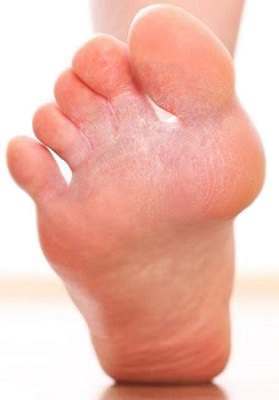 Over the years, many studies have been done to better understand athlete’s foot. Two studies, in particular, were particularly useful in explaining this fungal infection. Some scientists discovered that there are actually genetic reasons for athlete’s foot. These researchers from the University College of London as well as Radboud University published results stating that two different genetic mutations can be at fault for stubborn cases of athlete’s foot. When someone has one of these genetic mutations, their immune system is not able to effectively fight off the disease and can even let further infections develop in the body.
Over the years, many studies have been done to better understand athlete’s foot. Two studies, in particular, were particularly useful in explaining this fungal infection. Some scientists discovered that there are actually genetic reasons for athlete’s foot. These researchers from the University College of London as well as Radboud University published results stating that two different genetic mutations can be at fault for stubborn cases of athlete’s foot. When someone has one of these genetic mutations, their immune system is not able to effectively fight off the disease and can even let further infections develop in the body.
Regardless of this study, athlete’s foot is an infectious disease. It is not considered a genetic disease. While your genes and your general health may make you more susceptible to contracting these fungal infections, it does not mean that you will have fungal infections for your entire life. If you do have one of these genetic mutations, you must simply work harder to prevent athlete’s foot.
Preventing athlete’s foot is not easy and using preventative methods is not a guaranteed way to ensure you do not catch the disease. However, you should understand how you can contract athlete’s foot and how to avoid those situations. Most people catch athlete’s foot from areas like pools, gym locker rooms, water theme parks and other changing areas where people often go barefoot.
You may also contract it from infected instruments used for pedicures or from dirty sheets or towels. Maybe someday gyms, pools, and spas will make their floors anti-microbial, but until then you just have to be careful.
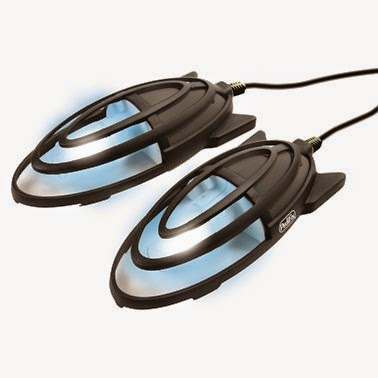 Avoiding gyms, spas and pools is ridiculous but there is an easier answer. Do not walk around barefoot on these surfaces. Always bring a pair of sandals or water shoes when you are in these areas, to protect your feet from infected surfaces. You should also avoid sharing your towel with other people. If your shoes and socks get wet, you should let them dry and change them. Shoes and socks are warm, dark and wet and this is the kind of environment that athlete’s foot fungus loves to grow in.
Avoiding gyms, spas and pools is ridiculous but there is an easier answer. Do not walk around barefoot on these surfaces. Always bring a pair of sandals or water shoes when you are in these areas, to protect your feet from infected surfaces. You should also avoid sharing your towel with other people. If your shoes and socks get wet, you should let them dry and change them. Shoes and socks are warm, dark and wet and this is the kind of environment that athlete’s foot fungus loves to grow in.
Foot powders are usually recommended to keep your feet dry and to prevent the growth of bacteria and fungus. A new alternative that is being explored is using ultra-violet light to sanitize shoes. This technique can kill 99.9% of the fungus and bacteria living in your shoes. It is not a sure way to prevent athlete’s foot, but it may help those who have to deal with chronic fungal infections.
Natural Athlete’s Foot Prevention
Natural Athlete’s Foot Prevention
A scientist from New York University has a message for people everywhere. He wants everyone to understand that you could have a fungal infection lurking somewhere on your foot at any time. He understands that you have been told that athlete’s foot is spread from person to person because it is so contagious. Dr. Rudolf L. Baer says that fungus does not really spread from one person to another, as a result of having stepped on a contaminated mat or floor. In fact, taking normal precautions will not prevent athlete’s foot infections for most people.
 The common belief is that you can avoid being infected by athlete’s foot by steering clear of the known causes of it. In reality, when you catch athlete’s foot it is usually your own fault. Athlete’s foot isn’t the rampantly contagious fungal infection that doctors and the media say it is. In most cases, someone who is infected and someone who is not infected can use the same surfaces and the non-infected person will never know the difference. For most people, athlete’s foot has little to do with walking barefoot at pools or locker room areas. In reality, athlete’s foot is actually caused by the following issues:
The common belief is that you can avoid being infected by athlete’s foot by steering clear of the known causes of it. In reality, when you catch athlete’s foot it is usually your own fault. Athlete’s foot isn’t the rampantly contagious fungal infection that doctors and the media say it is. In most cases, someone who is infected and someone who is not infected can use the same surfaces and the non-infected person will never know the difference. For most people, athlete’s foot has little to do with walking barefoot at pools or locker room areas. In reality, athlete’s foot is actually caused by the following issues:
- People who do not wash and thoroughly dry their feet after participating in sports or walking through water are more likely to get athlete’s foot.
- People who wear athletic shoes or other types of shoes that trap water are more likely to get athlete’s foot.
- People who wear the same shoes everyday are more likely to get athlete’s foot. This prevents the shoes from being able to dry properly and they can develop mold this way.
- People who share their socks and shoes with other people are more likely to get athlete’s foot.
- People who wear dirty socks are more likely to get athlete’s foot.
- People who wear the same pair of shoes for sports and for general use are more likely to get athlete’s foot.
- People who wear socks that do not release moisture or let air in are likely to get athlete’s foot.
- People who try on sample shoes at a store without wearing socks or a stocking are more likely to become infected with athlete’s foot.
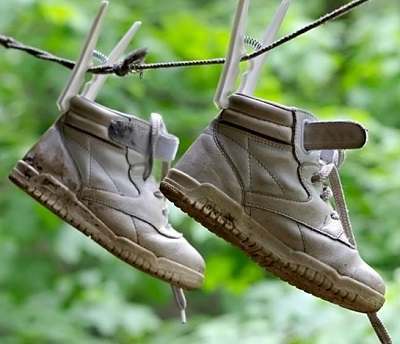 The biggest cause of athlete’s foot is the failure to prevent moisture from building up in their shoes and socks and continuing to wear them even when they are wet. Even when your shoes do not feel wet, if you wore them for a long time or if you were exercising while wearing them, there is probably moisture in them. A second cause of athlete’s foot is when your immune system isn’t strong enough to fight it off. To prevent your immune system from weakening, you should try to lead a generally healthy life.
The biggest cause of athlete’s foot is the failure to prevent moisture from building up in their shoes and socks and continuing to wear them even when they are wet. Even when your shoes do not feel wet, if you wore them for a long time or if you were exercising while wearing them, there is probably moisture in them. A second cause of athlete’s foot is when your immune system isn’t strong enough to fight it off. To prevent your immune system from weakening, you should try to lead a generally healthy life.
The scientists from New York University performed tests to prove that most cases of fungal infections are usually your own fault. The scientists tested one hundred staff members who had never had athlete’s foot. Then, they subjected them to 30 minute foot baths in water that was full of athlete’s foot fungus. After 6 weeks of this, they found that almost half of the feet of the staff had the fungus living on the surface. However, none of the subjects suffered from an actual fungal infection.
Contrary to popular belief, people might actually want to avoid the most common measures to prevent fungal infections. Many of them are not only worthless, but are occasionally harmful. You should avoid using sprays and sterilizers that are made from chemicals on your feet or in your shoes. Some chemicals can be so irritating that they may actually cause infections themselves. Instead, try the following tips to try to naturally prevent future infections of athlete’s foot:
- You should try to wear socks and shoes that are made from a light fabric that lets in air.
- You can try to use a foot powder that is mild to help keep your feet dry.
- If you feel like you have a lot of moisture between your toes, place some lamb’s wool there.
- Never put shoes and socks on wet feet.
- Always change your socks when you change your shoes.
- Use soaps that don’t include harsh chemicals or detergents when you are washing your feet.
8% of Americans Suffer from Foot Issues
Eight Percent of Americans Suffer from Foot Issues
How much do you know about the health of your feet? Almost everyone (nearly 8 out of 10 people) have at least one kind of foot problem that is so bad that it affects their daily life. Out of everyone surveyed by the American Podiatric Medical Association, almost half of them said that have had more than one foot problem and one third said that they have had more than three issues on their feet.
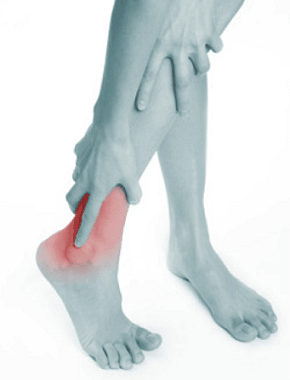 People who suffer from foot issues also have an increased chance in having other health problems as well. 65% of people who have weight issues experience regular foot pain. 59% of people who have back problems also have foot pain. 64% of people who suffer from arthritis also have issues with their feet. 52% of people who have discomfort in their knees feel similar discomfort in their feet. Finally, 32% of people who have problems with their circulation also experience regular foot pain.
People who suffer from foot issues also have an increased chance in having other health problems as well. 65% of people who have weight issues experience regular foot pain. 59% of people who have back problems also have foot pain. 64% of people who suffer from arthritis also have issues with their feet. 52% of people who have discomfort in their knees feel similar discomfort in their feet. Finally, 32% of people who have problems with their circulation also experience regular foot pain.
Some of the most common issues with feet that people experience include fungal infections, ingrown toenails, smelly feet, heel pain, bunions and high heel pain. Other common issues include bone spurs, stress fractures, tendinitis, hammertoes and nerve issues like pinched nerves.
Almost 51% of the people surveyed about the health of their feet said that their foot problems are so uncomfortable that they actually affect their mobility. They find it difficult to walk and stand. They also find it hard to sleep, play, work, exercise or even travel. While everyone agreed that something had to be done about their foot ailments, only 20% of people actually thought about taking care of their feet to restore their health.
In many cases, small issues become big problems and then people usually end up seeing their doctor. Surprising, no one really thinks about seeing a foot specialist for these issues even when they know a podiatrist will have more knowledge than their general physician. Most people try to avoid going to the doctor altogether by diagnosing their condition online and using products they can buy from their pharmacy. If you can diagnose your problem correctly, this may save you time and money.
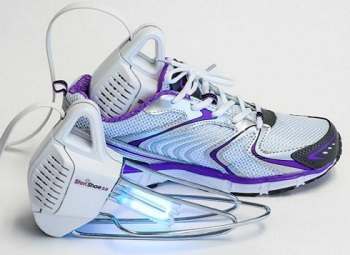 One company has even created a new product that uses an ultraviolet light to eliminate disease causing microbes without damaging your shoes. It is specifically designed to help with fungal infections and smelly feet. The device works as a sanitizer. If you put it in your shoes, it is said to kill almost 99.9% of the disease-causing bacteria, viruses and fungus that live inside your shoes. This interesting gadget was designed with people who have foot problems in mind and is the most ideal option for those who suffer regularly from fungal infections, like athlete’s foot, warts, foot odor and ulcers caused by diabetes. One of the main reasons that foot infections are recurring is because people treat their feet, but not their shoes. The cause of their infections actually lives inside of their shoes and you infect yourself whenever you put your shoes back on. But often it is hard to clean shoes properly and some shoes cannot be sent through the washing machine.
One company has even created a new product that uses an ultraviolet light to eliminate disease causing microbes without damaging your shoes. It is specifically designed to help with fungal infections and smelly feet. The device works as a sanitizer. If you put it in your shoes, it is said to kill almost 99.9% of the disease-causing bacteria, viruses and fungus that live inside your shoes. This interesting gadget was designed with people who have foot problems in mind and is the most ideal option for those who suffer regularly from fungal infections, like athlete’s foot, warts, foot odor and ulcers caused by diabetes. One of the main reasons that foot infections are recurring is because people treat their feet, but not their shoes. The cause of their infections actually lives inside of their shoes and you infect yourself whenever you put your shoes back on. But often it is hard to clean shoes properly and some shoes cannot be sent through the washing machine.
Podiatrists used to tell their patients to throw away their old footwear to prevent reinfection. But by using UV light to sanitize your footwear, there is no need to throw out all of your shoes when you get an infection.
Home Remedies to Eliminate Athlete’s Foot
Home Remedies to Eliminate Athlete’s Foot
An athlete’s foot infection is actually a fungal infection. If you have athlete’s foot you will normally find that your feet become red and irritated and that you suffer from cracked or flaky skin in between your toes. If you do not treat your athlete’s foot, you may find that the infection may become a recurring issue. Treating athlete’s foot is not complicated and there are both natural home remedies as well as over-the-counter treatments that you can use to treat fungal infections and prevent recurrences.
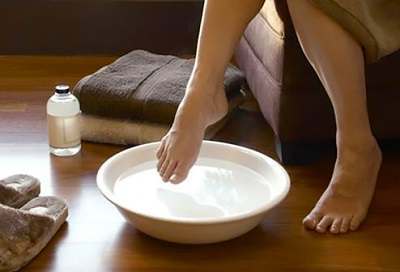 One of the most popular natural remedies is to mix water, apple cider vinegar, colloidal silver and moisturizer. You begin by soaking your infected feet in a mixture of four parts of water for one part vinegar for around half an hour. Then you should dry both feet thoroughly. After this, you should rub colloidal silver all over your feet, especially in between your toes. After you allow this to dry completely, you should use a moisturizer. When looking for a moisturizer, you might consider oil from garlic, tea tree oil, olive oil or sesame oil.
One of the most popular natural remedies is to mix water, apple cider vinegar, colloidal silver and moisturizer. You begin by soaking your infected feet in a mixture of four parts of water for one part vinegar for around half an hour. Then you should dry both feet thoroughly. After this, you should rub colloidal silver all over your feet, especially in between your toes. After you allow this to dry completely, you should use a moisturizer. When looking for a moisturizer, you might consider oil from garlic, tea tree oil, olive oil or sesame oil.
It is the reaction of the colloidal silver and the vinegar that will help to remove and treat athlete’s foot from your feet.
The moisturizer is essential because it will allow your feet to heal. You should perform this treatment on your feet twice a day. This treatment may remove fungal infections in only a few days. If you suffer from common recurrences, you should repeat this treatment at least once a week even when you do not notice any symptoms. While using colloidal silver is not required, it is a recommended ingredient because it will help the natural remedy heal your feet faster.
If this remedy does not appeal to you, you can try one of many other popular remedies for athlete’s foot:
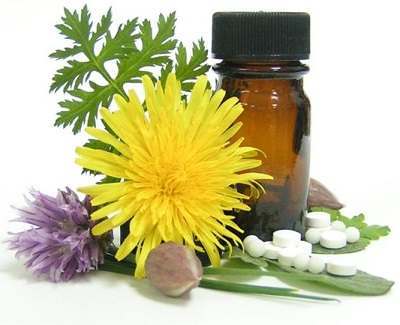 You might consider applying a small amount of hydrogen peroxide to the affected area after you have had a shower or a bath. You might also choose to follow this application with some apple cider vinegar. You should always moisturize after you apply these treatments.
You might consider applying a small amount of hydrogen peroxide to the affected area after you have had a shower or a bath. You might also choose to follow this application with some apple cider vinegar. You should always moisturize after you apply these treatments.- Use baking soda as an effective method of drying the feet and preventing dampness in your shoes.
- Wash your feet very well and dry them using a hair dryer to make sure they are completely dry. Ensure you dry in between your toes as well as the tops and soles of your feet.
- If you can find them, try boiling gallberry roots and then soaking both feet in the cooled solution. Try this daily for about a week.
- Try using tea tree oil on your feet to help remove fungal infections. You may also try using sesame oil on your feet twice each day to help cure athlete’s foot.
- Boil water and brew 6 black tea bags in the water before soaking both feet in it for half an hour to an hour. The acid in the tea may provide relief from skin irritation.
- Wash non-colored socks in bleach to kill any fungus spores living on your socks. You should also regularly wash your shoes. Make sure your socks and shoes are dry before you wear them again.
- Finally, try to avoid using soap with anti-bacterial properties so that you do not kill any beneficial bacteria.
The Healing Powers of Epsom Salt
The Healing Powers of Epsom Salt
Epsom salt is a traditional remedy that has been used for many centuries. Many cultures have their own uses for this versatile salt. It is said to have many benefits in many aspects of life. They are useful both around the house, the garden, as well as in the body. The best part about Epsom salts is that they are inexpensive and many businesses sell them in bulk. If you are looking for a cleansing detox, taking a bath with Epsom salts will provide you with many health benefits.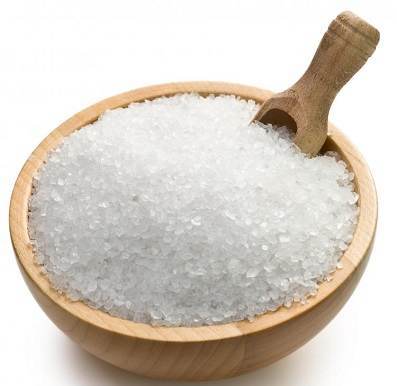
The salts get their name from a saline spring which is in the city of Epsom in Surrey, England. Epsom salts are different from other types of salts because they are made of a compound of sulfate and magnesium that occurs naturally. The use of these minerals in your body can work to provide you with a refreshing detox.
Both sulfate and magnesium are easily absorbed by your skin. They then enter your blood stream. Every day, your body absorbs vitamins through your skin while releasing toxins inside and outside of your body. Epsom salts help to aid this bodily process through a function that is often referred to as reverse osmosis. The salts will help remove toxins from your body while pumping their natural minerals into your body. Magnesium is essential for overall health and has the ability to help 325 different types of enzymes function the way they should.
These enzymes have many functions including improving your circulation, helping your nervous system function, keeping your muscles healthy and helping to reduce inflammation. Sulfates are equally important minerals because they help your body keep your joints, nervous tissue and skin very healthy. Since Epsom salts are such a rich source of these minerals, they are a fantastic way to ensure that your body has the right amount of both magnesium and sulfate. When you have healthy levels of magnesium and sulfate, your body will be able to remove toxins from your body quickly and with ease.
People who regularly use Epsom salts will see an improvement of a variety of health issues. These issues include fungal infections like athlete’s foot as well as injuries like sprains and sore muscles. People who suffer from diseases or injuries that cause chronic pain use Epsom salts to help them remove toxins and alleviate inflammation in their bodies while promoting a healthy balance of minerals.
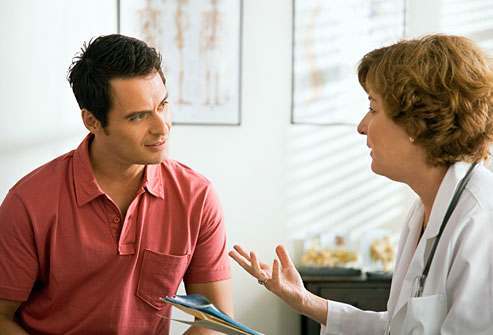 You should not use these salts if you are currently pregnant, have serious open flesh wounds or you are severely dehydrated. You should also ask your doctor before using Epsom salts if you have any kind of cardiovascular disease.
You should not use these salts if you are currently pregnant, have serious open flesh wounds or you are severely dehydrated. You should also ask your doctor before using Epsom salts if you have any kind of cardiovascular disease.
Taking an Epsom salt bath is very easy. You will need to allow yourself forty minutes to soak in the bath. The first twenty minutes will be spent removing toxins and the last twenty minutes are spent absorbing the minerals from the salt in the water.
You begin by filling up your bathtub with warm, filtered water. Then you will add the Epsom salts to the water. If you are bathing a child under 60 pounds, you will add only ½ of a cup of Epsom salts to the bath.
If you weigh between 60 and 100 pounds, you will add a full cup of salts. If you weight between 100 and 150 pounds, you will add 1.5 cups of salts. You will continue to add an extra ½ cup of salt for every 50 pounds that you add. You might also try to add some olive oil to the bath as this will have many benefits for your skin. Olive oil provides antioxidants that are beneficial to your health. Some people also add cayenne pepper or ginger which will help aid detoxification in your body.
You should never use soap when you are taking an Epsom salt bath because the soap may interfere with the whole process. After the bath, try to relax for a few hours. Although if you have arthritis, you should stay active after the bath to stop congestion building up in your joints.
Natural Cures for Athlete’s Foot
Natural Cures for Athlete’s Foot
Athlete’s foot is an uncomfortable, embarrassing fungal infection that is not only quite painful but also highly contagious. Many people who have athlete’s foot suffer from a redness and itchiness in between their toes as well as on other parts of their feet. The symptoms of athlete’s foot include dry skin, blisters, irritation and serious discomfort. You usually catch this type of infection when you come into contact with fungus, usually by walking barefoot on wet floors in pools and gyms.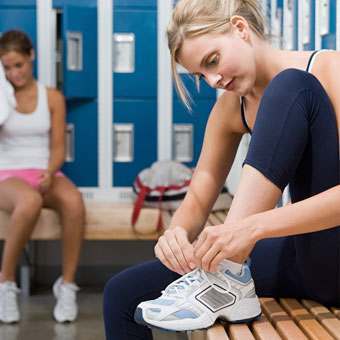
There are actually three different types of the athlete’s foot infection. You may suffer from a type called moccasin, which usually presents itself with extremely dry skin. You might also experience the vesicular type of the infection which usually occurs when a person has an allergy to fungus. This type is very painful and can cause foot ulcers and blisters. This is the most severe type of athlete’s foot and it can occur all over the feet.
Athlete’s foot is very contagious and it is easily spread through wet, warm areas like pools, gyms and even nail salons. People who are older or who have had the infection before are more likely to suffer from athlete’s foot, compared to people who have never had it. However, this type of infection is very common and some surveys suggest that almost 70% of the population will suffer from athlete’s foot to some degree at some point in their life.
Athlete’s foot is hard to prevent and equally hard to treat. However, there is a variety of different natural methods that you can consider when you are trying to get rid of athlete’s foot. The following list includes simple suggestions for both treating and preventing fungal infections:
- Try soaking each foot in warm water with cinnamon. All you need to do is boil some water in a kettle and then toss in a couple of cinnamon sticks. Not only will it help remove stubborn infections but it is also a nice treat for your feet.
 You should take care of your feet by wearing good shoes. Your shoes should let air in so that moisture does not build up on the inside of your shoes.
You should take care of your feet by wearing good shoes. Your shoes should let air in so that moisture does not build up on the inside of your shoes.- Improving your immune system’s function is the key to good general health. Try taking vitamins or eating foods that work to help your immune system function efficiently.
- Use baking soda to help dry up wetness in your shoes.
- Some studies say that consuming garlic will not only prevent recurring fungal infections but it will also help your body heal faster. You can either choose to eat garlic or you may choose to put it right on your skin alongside some olive oil.
- Try using a lemon water rinse on your feet to help remove infections.
- Using powder on your feet is a common preventative measure to help protect your feet against fungal infections.
- Exercise will help improve your overall health but it will also improve your circulation in places like your feet. By improving your circulation, you will become more aware of your feet when you have feet problems. This will help you treat them in time for infections to heal quickly.
- Cornstarch is a great natural method that you can use for drying your feet. To use it effectively, brown it in a frying pan first and then use it on the infected area daily for a few weeks. Make sure to use the cornstarch even if you think the infection has healed.
 Tea tree oil is a very common natural treatment for athlete’s foot. It is said to have anti-fungal properties that work to help relieve infections without causing damage to your skin. This method may take several weeks to work before the infections totally disappear.
Tea tree oil is a very common natural treatment for athlete’s foot. It is said to have anti-fungal properties that work to help relieve infections without causing damage to your skin. This method may take several weeks to work before the infections totally disappear.- Dampen a cloth with some Clorox and then use it to clean your feet. Bleach is a common method used for killing bacteria. Be careful when using this method because bleach is a very harsh chemical.
- Consider good hygiene. Do not share your shoes or socks with other people, especially at the gym. You should always wear shoes in public areas where there is often a build up of bacteria. These areas include pools and locker rooms.
- You might consider using vinegar on your feet. Use two parts water for each part of vinegar so that you do not accidentally burn your skin. In the event that the vinegar irritates your skin, avoid using this particular remedy.
- Baby oil can help rehydrate your skin by soothing dry and flaky areas of your skin. Apply the oil to your feet each night for at least couple of weeks.
- You can always try an over-the-counter treatment. You will have a variety of options including creams, powders, or foot sprays. If nothing seems to be working you should consult your doctor, who may prescribe a prescription anti-fungal or antibiotic.
Athlete’s Foot Overview
Athlete’s Foot Overview
It used to be only serious athletes who would routinely suffer from athlete’s foot. They were the only groups that would spend their days wearing sweaty shoes, socks and walking through gym locker rooms. But now that the population is experiencing a health trend, more people work out regularly in gyms than before. With the growth in health consciousness, there is a corresponding growth in the number of people who suffer from athlete’s foot. Athlete’s foot is a fungal infection. It usually results in feet and toes that are bright red from irritation. The skin also becomes damaged as your feet peel or crack or become full of blisters.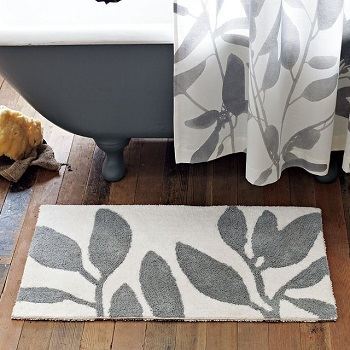
It is important to understand what causes athlete’s foot so that you can easily prevent this painful kind of fungal infection. This infection develops when you provide it with a dark, warm and wet area in which to grow. The fungus loves the abundance of dead skin around your feet, especially when you wear wet shoes that are warm from exercise. Warm, sweaty shoes are the perfect habitat for fungus as well as bacteria. Once you get athlete’s foot, you can infect other people through wet surfaces like bath mats or locker room floors.
There are very simple steps that you can take to avoid athlete’s foot. They require a certain amount of mindfulness when it comes to hygiene and walking barefoot in public areas. Here is a list of basic things that everyone can do to both prevent athlete’s foot and avoid spreading it to other people:
- Make sure to clean your feet very regularly. If you have any abrasions or cuts on your feet, this will prevent bacterial infections. You should also try to remove the dead skin and make sure you scrub your toes and your feet, paying close attention to your toenails. Keeping your toenails clean can help to remove any fungus growing in those often forgotten areas.
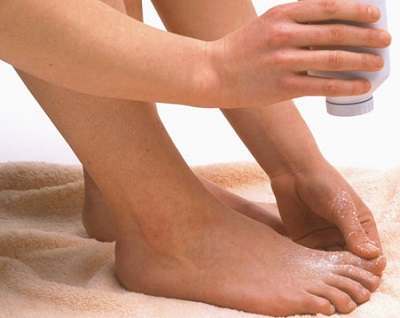 Always dry your feet thoroughly after you wash them. Wait a few minutes after they have dried before you put shoes or socks on your feet. You can use the warm function on a hair dryer to remove any moisture from your feet. You may also consider using an anti-fungal foot powder to help keep them dry throughout the day.
Always dry your feet thoroughly after you wash them. Wait a few minutes after they have dried before you put shoes or socks on your feet. You can use the warm function on a hair dryer to remove any moisture from your feet. You may also consider using an anti-fungal foot powder to help keep them dry throughout the day.- Always wear clean socks rather than reusing socks that have already been worn, and have not yet been washed. If you are active or naturally have sweaty feet, you may consider changing your socks a few times each day to make sure that your feet remain dry. Soaking dirty socks in water that has been boiled may help you kill any fungus spores living on your socks.
- You should consider dusting the inside of each of your shoes with the same anti-fungal powder that you use on your feet.
- Always let your shoes dry after you wear them. The best way to do this is to rotate your shoes so that you do not wear the same shoes every day.
- When you are at the pool or the gym, you should wear sandals or shower shoes to prevent having to walk barefoot on the tile floor.
 If you become infected with athlete’s foot, you can consider several ways of treating it. There are natural treatments that many people find very useful. You can consider applying vitamin E to the irritated area to relieve pain and itching. You may also consider trying a supplement called acidophilus which is mixed into a glass of water. You take this supplement in the morning and the evening. There are types of bacteria that you can use to supplement your diet. Some bacteria will help you restore a normal amount of healthy bacteria in your body, which will improve your overall health.
If you become infected with athlete’s foot, you can consider several ways of treating it. There are natural treatments that many people find very useful. You can consider applying vitamin E to the irritated area to relieve pain and itching. You may also consider trying a supplement called acidophilus which is mixed into a glass of water. You take this supplement in the morning and the evening. There are types of bacteria that you can use to supplement your diet. Some bacteria will help you restore a normal amount of healthy bacteria in your body, which will improve your overall health.
If a natural remedy is not for you, you may consider an over-the-counter treatment for your fungal infections.
There are topical creams available at pharmacies which include the ingredient clotrimazole. This ingredient is one of the most common ingredients in controlling fungal infections.
If you have athlete’s foot, you will do well to follow the precautionary tips provided above to help you clear it up and avoid reinfection. You should, however, avoid brushing your feet when you have athlete’s foot because it will cause more irritation to the area.
Treating Athlete’s Foot Naturally
Treating Athlete’s Foot Naturally
If you’ve ever experienced a bout of athlete’s foot, you know what an uncomfortable nuisance it is. Symptoms can range from mild itching to burning sensations on the feet and even tissue damage if it is left untreated. The key to getting rid of athlete’s foot is to treat it early on. Don’t ignore it and don’t aggravate it. Believe it or not, athlete’s foot is actually derived from a fungus. That being said, a fungus will thrive in the appropriate conditions. Similarly, it will die if deprived of an ideal habitat, and so it’s all about creating anti-fungal conditions in order to get rid of your case of athlete’s foot.
 Conventionally, your doctor will most likely prescribe some sort of medicated powder or gel that you will apply daily with the desired effect being that your athlete’s foot will be cleared within a couple of weeks. In a lot of cases this is an adequate solution and does indeed clear up the problem. However, due to the fact that these over-the-counter medicines are unnatural and manufactured, they can actually have an adverse effect on the body. Manufactured medicines contain chemicals that are often harsh on your skin and the burning sensation that you feel from your athlete’s foot could just be replaced with a different burning feeling, caused by the chemicals. Caution is always advised when considering taking any new medication, especially manufactured ones and especially ones you apply to your skin.
Conventionally, your doctor will most likely prescribe some sort of medicated powder or gel that you will apply daily with the desired effect being that your athlete’s foot will be cleared within a couple of weeks. In a lot of cases this is an adequate solution and does indeed clear up the problem. However, due to the fact that these over-the-counter medicines are unnatural and manufactured, they can actually have an adverse effect on the body. Manufactured medicines contain chemicals that are often harsh on your skin and the burning sensation that you feel from your athlete’s foot could just be replaced with a different burning feeling, caused by the chemicals. Caution is always advised when considering taking any new medication, especially manufactured ones and especially ones you apply to your skin.
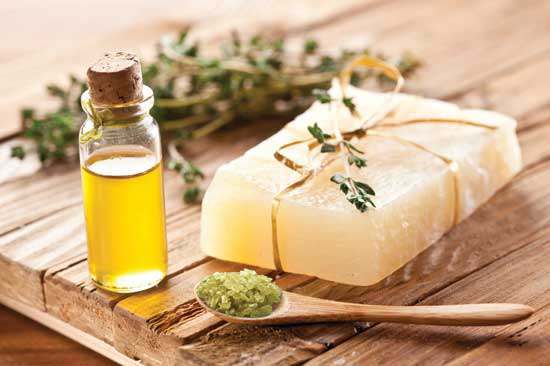 There are many alternatives available to remedy your athlete’s foot. Firstly, you should consider how to upset the ideal conditions for the fungus to grow in. The fungus thrives in warm, damp conditions, hence why it is most commonly found on the feet and groin area. So in order to treat it, it could be as simple as ensuring you wash your feet regularly, wear clean cotton socks and clean shoes that are changed daily. It is also important that you expose your feet to sunlight regularly and avoid having them in closed shoes all the time. Skin needs to breath and this applies to whole body, including your feet. These personal hygiene habits, accompanied by the use of tea tree oil have proven to be very good at clearing up athlete’s foot.
There are many alternatives available to remedy your athlete’s foot. Firstly, you should consider how to upset the ideal conditions for the fungus to grow in. The fungus thrives in warm, damp conditions, hence why it is most commonly found on the feet and groin area. So in order to treat it, it could be as simple as ensuring you wash your feet regularly, wear clean cotton socks and clean shoes that are changed daily. It is also important that you expose your feet to sunlight regularly and avoid having them in closed shoes all the time. Skin needs to breath and this applies to whole body, including your feet. These personal hygiene habits, accompanied by the use of tea tree oil have proven to be very good at clearing up athlete’s foot.
This oil is available in most health shops and is most effective in a pure 100% extract. A thin coating of oil applied directly to the feet every day should clear up the fungus within a couple of weeks. Using this method has the added benefit of assurance that you are using natural ingredients on your skin, so you don’t have to worry about any severe chemical reactions.
Too often people turn to unnatural, manufactured medicines to treat athlete’s foot. Surely it is preferable to simply look at rectifying hygiene issues, throwing out your old running shoes and buying some new socks rather than applying a cream that contains chemicals that may cause damage to your skin. Athlete’s foot can be cured through natural means and you should consider these before resorting to the over-the-counter treatment options.

 Subscribe Now
Subscribe Now
